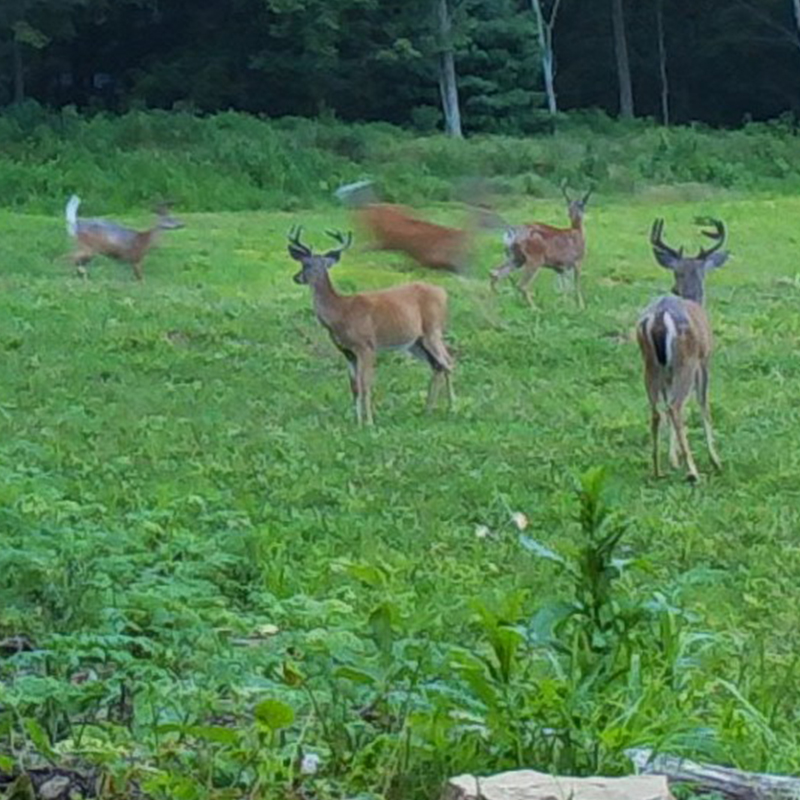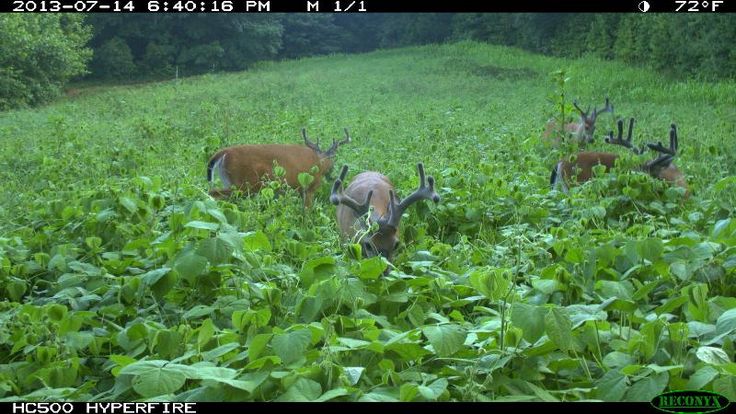Spring Food Plot Plantings that Feed Deer and Build Soil
As spring approaches, many people begin to think about planting their garden and tending to their lawns. But for hunters and wildlife enthusiasts, spring is also the perfect time to start planning and planting a deer food plot.
A food plot is an area of land that is specifically cultivated to provide an additional food source for deer and other wildlife. Spring is an ideal time to plant a food plot because the warmer temperatures and increased rainfall create perfect conditions for seed germination and plant growth. Planting a food plot not only provides a valuable food source for deer but also helps to build soil quality and improve the overall health of the environment.
Before planting a deer food plot, it is important to choose the right location. Look for an area that has good drainage and receives plenty of sunlight. The size of the plot will depend on the available space and the number of deer you are hoping to feed. I usually recommend no smaller than 3 acres in regions where deer numbers are high. Small summer food plots will get destroyed by deer before they get a chance to grow. We can alleviate the browse pressure by installing a 3-wire electric fence to keep deer away until the plants are well-established.
Once you have chosen the location, the next step is to prepare the soil. The land should be cleared of any existing vegetation and debris, and the soil should be tilled and fertilized. Adding organic matter such as compost or manure can help to improve soil quality and provide essential nutrients for the plants. I always get a soil test and add lime accordingly and add compost to improve the organic matter level. This will allow the soil to hold more moisture and nutrients.
What to Plant in a Spring Food Plot for Deer
When it comes to selecting the right plants for a deer food plot, there are a variety of options to choose from. Some popular choices include clover, alfalfa, soybeans, and corn. Each type of plant offers its own unique benefits and provides different nutrients to deer.
Clover is a popular plant to include in a deer food plot because it is high in protein and is easy to grow. It is also a perennial plant, which means it will come back year after year. Alfalfa is another high-protein plant that is favored by deer. However, it requires more maintenance and attention than clover.
Soybeans are another great option for a deer food plot, as they are high in both protein and fat. They also require minimal maintenance and can be grown in a variety of soil types. Corn is a staple of many deer food plots because it provides a high-energy food source. However, corn can be more challenging to grow and requires a longer growing season.
When planting a deer food plot, it is important to remember that the success of the plot will depend on proper maintenance and care. This includes regular watering, fertilization, and weed control. It may also be necessary to protect the plot from browsing deer and other wildlife.
In conclusion, planting a deer food plot in spring is a great way to provide a valuable food source for deer while also improving soil quality and enhancing the overall health of the environment. By choosing the right location, selecting the appropriate plants, and providing proper maintenance and care, a successful deer food plot can be established and enjoyed for years to come.
Best Plant Choices for a Spring Food Plot
1. Clover: This is a popular choice for a summer food plot as it provides a good balance of nutrition and growth for deer. Clover also helps fix nitrogen in the soil, which benefits other plants in the area. Red clover generally can handle the heat of summer better than white clover varieties. White clover is best planted in fall. If you plan to terminate and plant the plot with fall/winter/spring varieties then, expensive clover may not be the best choice to plant in spring.

2. Soybeans: Soybeans are high in protein and are an excellent choice for a summer food plot. They’re easy to grow and can be planted in most soils. I also plant a lot of cow peas in spring. I used to think cow peas were only good for the South but have had great results with cowpeas in New York.

3. Sunflower: Sunflowers are another excellent option for a summer food plot. They’re high in fat and provide essential oils that deer love. Sunflowers are also easy to grow and can adapt to different soil types. Deer eat the foliage and everything eats the seed heads when they ripen. Once ripe, they don’t last long.
4. Alfalfa: Alfalfa is packed with nutrition and grows quickly during the summer. It’s also drought-resistant, making it an excellent choice for dry climates. It’s expensive seed, though and is best used if you plan to keep the plot in alfalfa for a few years. Alfalfa can be prone to insect and disease and requires some good soil with a neutral pH. An easier plant to use is Red Clover. For the ultimate guide to clover for food plots check out this article: https://chilcoteforester.com/ultimate-clover-food-plot-guide/
5. Millet: Millet is a quick-growing grass that provides deer with a good source of nutrition during the summer. It’s also an excellent choice for areas with limited rainfall as it’s drought-resistant.
6. Chicory: Chicory is a hardy plant that grows well in most soils. It’s a good choice for a summer food plot as it’s high in protein, minerals, and vitamins. It can be planted in fall as well.
7. Buckwheat: Buckwheat is a fast-growing crop that provides a good source of protein and carbohydrates for deer. It’s also an excellent choice for areas with poor soil quality. It is a good minor of Phosphorous but doesn’t have a relationship with mycorrhizal fungi. Other plants in the mix will take care of that. This is an excellent pollinator food.
8. Sorghum: There are many varieties of sorghum. The best choice will be one of medium height and a large grain head. The nice thing about sorghum is that it is not eaten by deer until the grain is ripe and the plant is frosted. So, in high-pressure areas, it may create a good hunting plot in late fall.
9. Brassicas: I always sneak some brassicas into my food plot mixes. My favorite is Collards. This plant is hardy, and makes a large leaf with a huge taproot, reaching down deep to get moisture and to bring minerals up to the surface for the next crop. Its a palatable, high-protein plant. I also like the hybrid rape varieties for spring plantings. Pasja and T-raptor are common and great plants.
Become a Food Plot Expert with my Course
I have created a food plot course that will take you through every step of the process, from how to choose a location, clearing land, preparing the soil, what, when and how to plant, soil amendments.
Go check out the course here: http://schilcote1223.mastermind.com/masterminds/39101
You can find the course and my other content in the linktree: https://linktr.ee/stevechilcote
